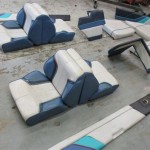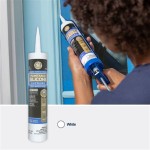Exploring The Ford Transit 12 Passenger Van Interior Dimensions
The Ford Transit 12-passenger van is a popular choice for transporting large groups, whether for commercial purposes, family trips, or shuttle services. Understanding the interior dimensions of this van is crucial for prospective buyers and current owners alike. This understanding allows for informed decisions regarding cargo capacity, passenger comfort, and the suitability of the vehicle for specific needs. This article will delve into the detailed interior dimensions of the Ford Transit 12-passenger van, providing a comprehensive overview of its spaciousness and utility.
The Ford Transit is available in various configurations, including different roof heights and wheelbase lengths, which significantly impact the interior dimensions. Therefore, it is important to distinguish between these variations when examining the available space. The standard 12-passenger Transit typically comes in the long wheelbase configuration, offering a balance between passenger capacity and maneuverability.
We will explore the critical measurements that define the interior space, including headroom, legroom, shoulder room, and cargo area behind the last row of seats. Understanding these dimensions is essential for determining the overall comfort and practicality of the van for its intended use.
Headroom and Interior Height
Headroom is a critical factor in passenger comfort, especially on longer journeys. The Ford Transit 12-passenger van is available with different roof height options, directly influencing the available headroom. The low-roof model offers a more streamlined profile, but it significantly reduces headroom, potentially making it less comfortable for taller passengers.
The medium-roof model provides a noticeable increase in headroom, offering a more comfortable experience for most adults. Passengers can typically stand upright without difficulty within the medium-roof van. The high-roof model offers the most generous headroom, even accommodating very tall individuals with ample space to stand and move around comfortably.
Specifically, the interior height for a low-roof Transit is around 56.9 inches, while the medium-roof reaches approximately 72 inches. The high-roof variant boasts an impressive 83.6 inches of interior height. These measurements are pivotal in determining the suitability of the van for different applications. For instance, shuttle services transporting business professionals often prioritize the high-roof option for enhanced passenger comfort and ease of movement.
Beyond passenger comfort, headroom also affects the ease of loading and unloading cargo. In high-roof models, items can be moved more freely within the cabin, streamlining the process. This is particularly beneficial when transporting luggage, equipment, or other bulky items along with passengers.
Legroom, Shoulder Room, and Passenger Space
Legroom and shoulder room are equally crucial for passenger comfort, especially in a 12-passenger configuration where space is shared. The Ford Transit 12-passenger van is designed to offer reasonable legroom in all seating rows, although the exact amount can vary depending on the seat configuration and the positioning of the seats.
Typically, the front seats offer the most generous legroom, allowing the driver and front passenger to adjust their positions for optimal comfort. The middle rows provide adequate legroom for most adults, although taller passengers may find the space somewhat limited on longer trips. The rear row typically has the least amount of legroom, making it potentially less comfortable for adults on extended journeys, but suitable for children.
The legroom in the Ford Transit 12-passenger van typically ranges from around 35 to 40 inches in the front row, depending on seat adjustment. The middle rows offer approximately 30 to 35 inches of legroom, while the rear row may provide slightly less. These measurements are approximate and can vary based on the specific seat configuration and year model.
Shoulder room is also an important consideration, especially when seating three passengers across in each row. The Ford Transit is designed to provide sufficient shoulder room to prevent passengers from feeling cramped or constricted. The shoulder room typically measures around 68 inches in the front row and slightly less in the subsequent rows.
The overall passenger space within the Ford Transit 12-passenger van is designed to maximize comfort and functionality. Ford engineers have strategically positioned the seats and optimized the interior layout to provide a pleasant experience for all occupants. The thoughtful design considerations contribute to the van's popularity as a reliable and comfortable people-mover.
It's crucial to note that legroom and shoulder room are subjective measurements that can be influenced by individual passenger preferences. However, the Ford Transit strives to provide a reasonably comfortable experience for a wide range of body types and seating preferences.
Cargo Area and Storage Solutions
While the Ford Transit 12-passenger van is primarily designed for transporting people, it also offers a valuable cargo area behind the last row of seats. The size of this cargo area varies depending on the wheelbase length and the positioning of the rear seats. However, even with all seats occupied, the van typically provides enough space for luggage, equipment, or other essential items.
The cargo area behind the rear seats in the long wheelbase Transit typically measures around 27 to 30 inches in depth, providing a substantial amount of space for storage. This area can be used to transport suitcases, backpacks, sports equipment, or any other items that passengers may need to bring along on their journey.
In addition to the cargo area behind the seats, the Ford Transit also offers various storage solutions throughout the cabin. These solutions include overhead compartments, door pockets, and under-seat storage areas. These storage options provide convenient places to store smaller items, such as phones, wallets, maps, and snacks.
The overhead compartments are particularly useful for storing personal items, preventing them from cluttering the seating area. The door pockets provide easy access to drinks, maps, and other frequently used items. The under-seat storage areas can be used to store larger items, such as blankets, pillows, or emergency supplies.
For those needing to maximize cargo space, the rear seats can be easily removed or folded down to create a larger storage area. This flexibility allows the Ford Transit to adapt to different needs, whether it's transporting a large group of people or hauling a significant amount of cargo.
It's important to consider the specific needs of the intended use when assessing the cargo capacity of the Ford Transit 12-passenger van. If the van will primarily be used for transporting passengers, the standard cargo area behind the seats may be sufficient. However, if the van will be used for hauling larger amounts of cargo, the rear seats may need to be removed or folded down to create more space.
Ultimately, the Ford Transit 12-passenger van offers a versatile combination of passenger capacity and cargo space, making it a practical choice for a wide range of applications. Its thoughtful design, comfortable seating, and ample storage solutions contribute to its popularity as a reliable and capable people-mover.
Choosing the right Ford Transit model also depends on the type of work you intend to use it for. For instance, if you need to frequently transport large groups and their luggage to and from airports, then a high-roof, long-wheelbase model will be more suitable than a low-roof, standard-wheelbase version. The increased cargo capacity and headroom will ensure greater comfort and convenience for both passengers and drivers.
Consideration should also be given to the accessibility of the cargo area when fully loaded with passengers. A well-organized system of cargo restraints and compartments can help to maximize the available space and prevent items from shifting during transit. This is particularly important for safety reasons and for maintaining a comfortable environment for passengers.
Furthermore, the interior dimensions should be evaluated in conjunction with the vehicle's overall length and turning radius. A longer wheelbase provides more interior space but can also make the van more challenging to maneuver in tight spaces. Selecting the right balance between interior space and maneuverability is key to ensuring that the van is suitable for the intended use.

Maximizing Passenger Comfort In The Ford Transit 12 Van

2024 Ford Transit Interior Dimensions Configurations Cargo Space
Cargo Area On 12 Passenger Transit Ford Usa Forum

Ford Transit Vans Uptown

2024 Ford Transit Connect Passenger Wagon Interior Dimensions

2024 Ford Transit Interior Dimensions Configurations Cargo Space
Confused About Interior Dimensions 148 Long Vs Extended For Passenger Van Ford Transit Usa Forum

Ford Transit 12 Passenger Van Al In Portland Or

2024 Ford Transit Passenger Van Xlt Model Details Specs Ca

2024 Ford Transit 150 Cargo Van Dimensions Towing Capacity
Related Posts








